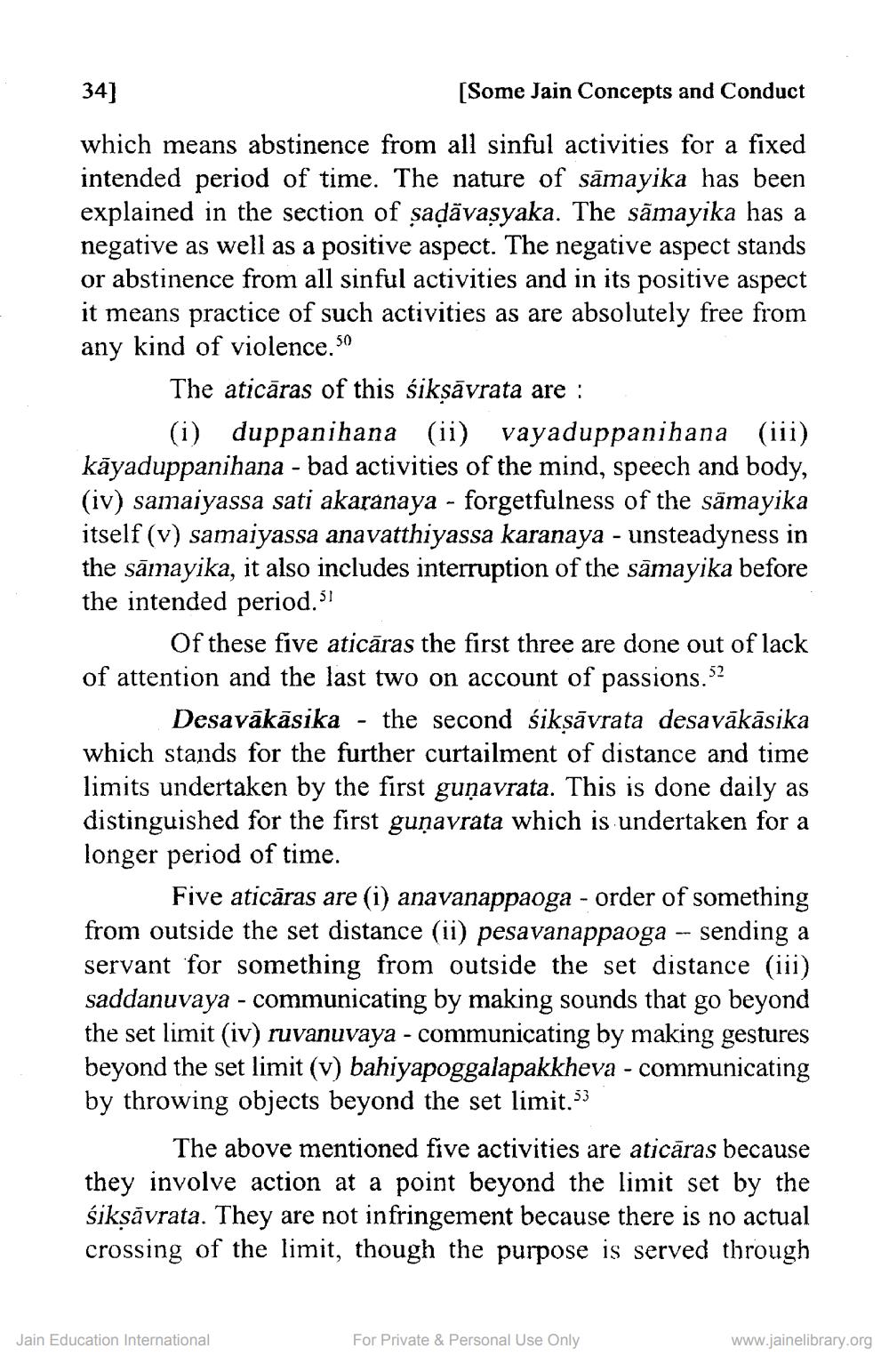________________
34]
[Some Jain Concepts and Conduct which means abstinence from all sinful activities for a fixed intended period of time. The nature of samayika has been explained in the section of saḍāvaṣyaka. The sãmayika has a negative as well as a positive aspect. The negative aspect stands or abstinence from all sinful activities and in its positive aspect it means practice of such activities as are absolutely free from any kind of violence. 50
The aticāras of this sikṣāvrata are :
(i) duppanihana (ii) vayaduppanihana (iii) kāyaduppanihana - bad activities of the mind, speech and body, (iv) samaiyassa sati akaranaya - forgetfulness of the sämayika itself (v) samaiyassa anavatthiyassa karanaya - unsteadyness in the samayika, it also includes interruption of the samayika before the intended period.31
Of these five aticāras the first three are done out of lack of attention and the last two on account of passions. 52
Desavākāsika
the second sikṣāvrata desavākāsika which stands for the further curtailment of distance and time limits undertaken by the first guṇavrata. This is done daily as distinguished for the first gunavrata which is undertaken for a longer period of time.
-
Five aticāras are (i) anavanappaoga - order of something from outside the set distance (ii) pesavanappaoga -- sending a servant for something from outside the set distance (iii) saddanuvaya - communicating by making sounds that go beyond the set limit (iv) ruvanuvaya - communicating by making gestures beyond the set limit (v) bahiyapoggalapakkheva - communicating by throwing objects beyond the set limit.53
The above mentioned five activities are aticāras because they involve action at a point beyond the limit set by the śikṣāvrata. They are not infringement because there is no actual crossing of the limit, though the purpose is served through
Jain Education International
For Private & Personal Use Only
www.jainelibrary.org




